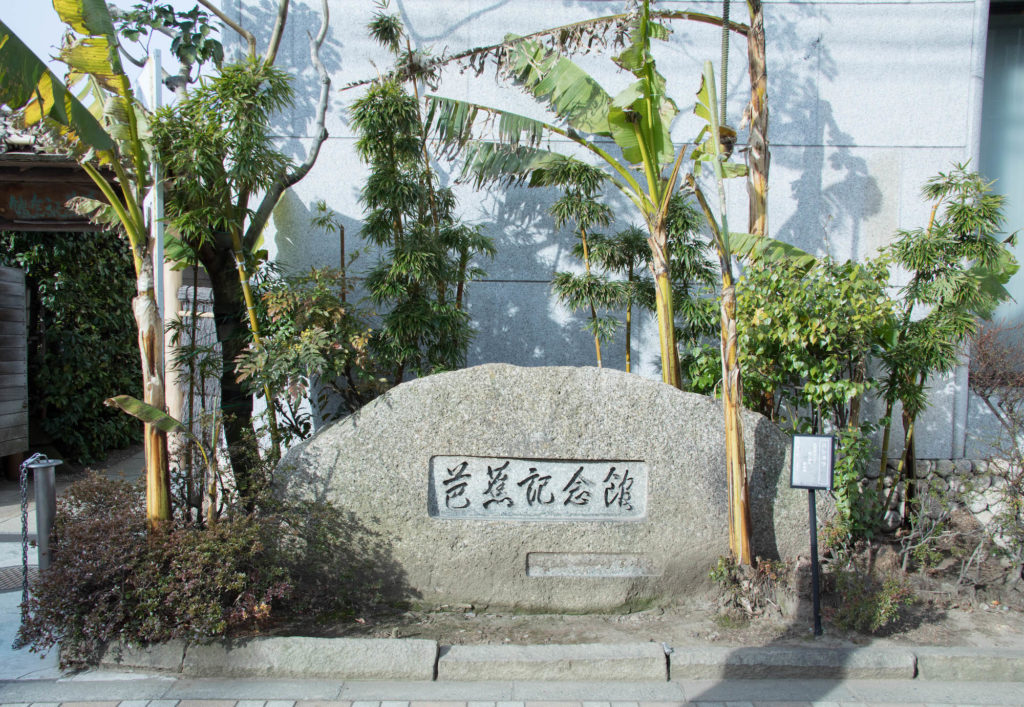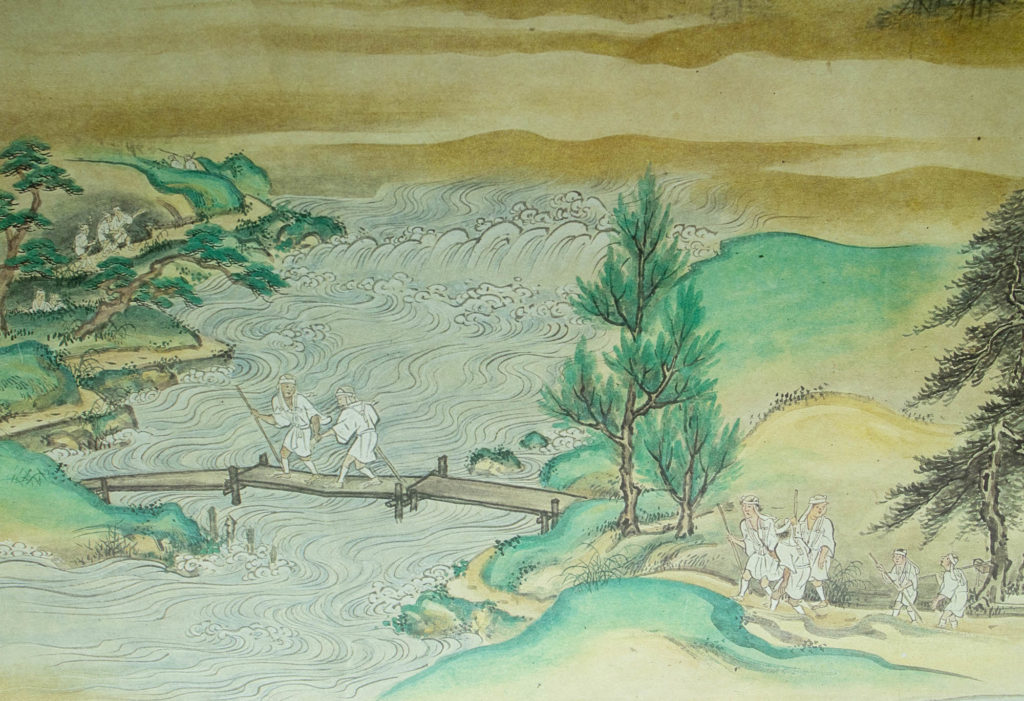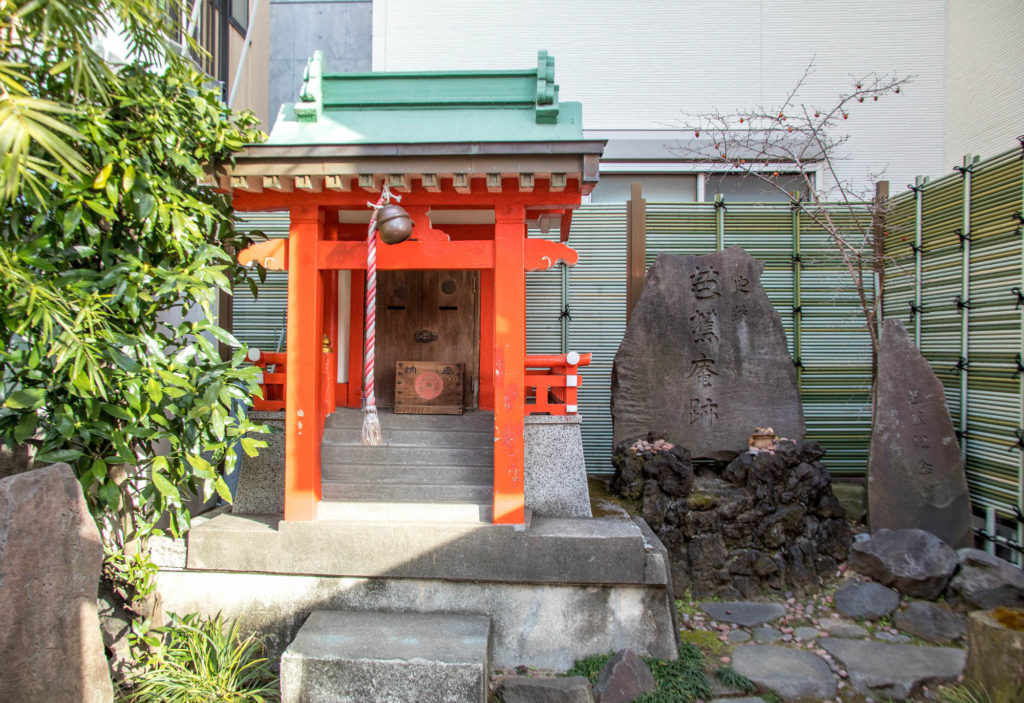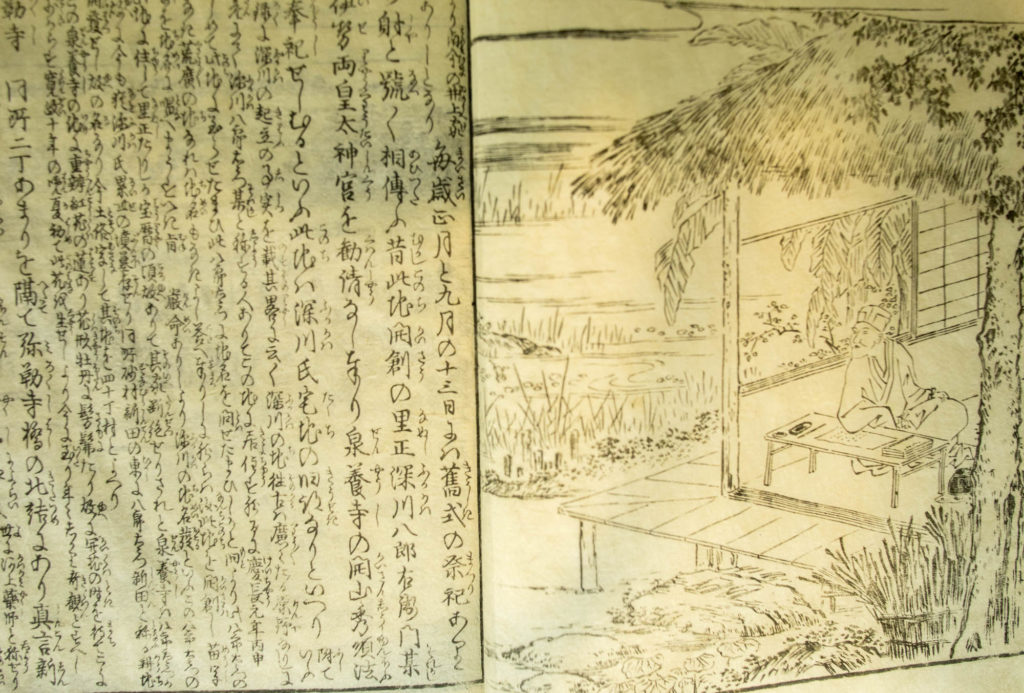
Sobo. Green peach. Banana. Matsuo Bashō was known by multiple aliases – including, allegedly, a ninja – but it’s as the wandering haiku poet of Edo for which he is globally renowned.
After a comfortable childhood in Iga prefecture, the young wordsmith moved to Edo in 1672 to pursue his passion for poetry. He rapidly established himself as a literary force with a growing and dedicated group of disciples. After tiring of the Nihonbashi literati (almost as quickly), he moved to the comparatively rural Fukagawa on the banks of the Sumida river.
There, his students built him a rustic hut, beside which they planted the infamous bashō (banana plant) that inspired the pen name, Mr Banana. The hermitage, which was rebuilt at least twice, was the site of his most important work, Oku no Hosomichi – a travel sketch of his long and dangerous trek to visit the the interior of Japan and the sites made famous by the Waka poets he worshipped.

Records of his 2400km Edo-ultra-marathon -including various souvenirs- can be viewed at the Bashō Kinenkan across three floors, spilling out to a small, lush pocket garden (banana plants inclusive). The memorial hall also serves as a location for regular gatherings of contemporary haiku writers and administers a number of Haiku contests.
Now approaching its fortieth anniversary, the interior mightn’t be as slick as some other nearby attractions, but the exhibits remain in excellent condition and the building itself is an understated modernist container for the collection of valuable documents.
The small scale of the museum allows visitors to engage with the content in more detail, leaving enough time and energy to wander the area Bashō called home until his death in 1694.
Nearby the museum are a number of historic sites dedicated to the poet such as a recreation of the hut from which Bashō set out on his famous trek, and a small, elevated garden overlooking the confluence of the Sumida and Onagi rivers – complete with banana plants and rotating-statue.

A few minutes walk away lies the small Bashō Inari Jinja. Built at the site where a 1917 flood unearthed a stone frog beloved of Bashō (currently displayed at the memorial hall), the shrine calls to mind Bashō’s famous haiku:
Into the ancient pond;
A frog jumps;
Water’s sound!
Like the frog’s splash – imagined but not directly observed – in walking the spaces between the museum and surrounding sites, the world inhabited by Mr Banana slowly comes into focus.












